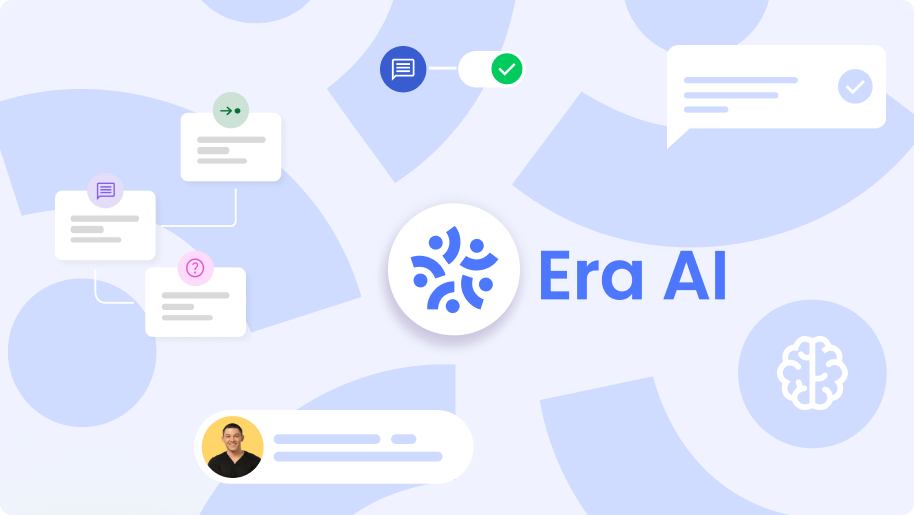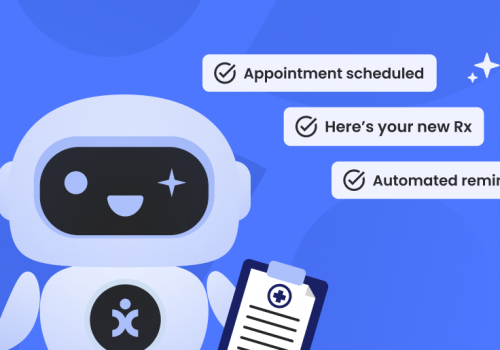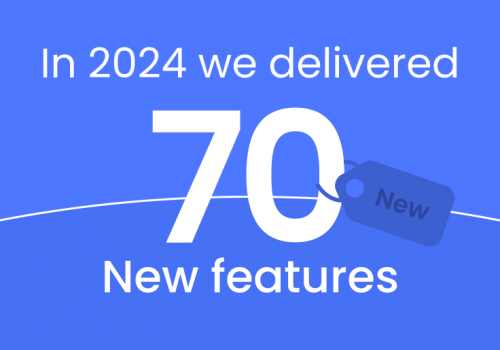Lead Generation Strategies. When people think of lead generation, some common tactics come to mind. People think of blogs, pop-ups, landing pages, social media, influencers, and encouraging reviews. These lead generation tactics are important, but there’s one more that is often overlooked, the customer experience. Customer experience is influenced by the tactics above but it’s also a force of its own. The sum of experiences will accumulate to a net positive or net negative experience with the company, and this is why every element of the customer experience must be considered.
Customer experience has the potential to impact how the future of the company and that includes sales. It’s no secret that companies today are focusing on customer experience in a way they never did in the past. In fact, two-thirds of companies are now competing on customer experience, which is up from 36% in 2010. One of the major reasons companies focus on customer experience is because they want to increase revenue. One study found that 84% of companies who try to improve their customer experience report higher revenue. Additionally, companies with a keen focus on customer experience report 4-8% higher revenue than their competitors.
Today we’re going to drill into how customer experience can be tailored to boost your lead generation, define the best practices, and tell you four ways you can put this plan into action. Let’s take a look.
4 Ways to Improve Lead Generation Through Customer Experience
1. Customer Service as Lead Generation
Customer service is a key part of the customer experience. At its core customer service is just communication. It is the sum of the conversations, interactions, and engagement between the customer and the company. Each time your business is interacting with a customer, they are “serving” them in some way. Now of course, strictly speaking, customer service is considered to be when the business is actively helping solve a customer problem. Customer service is a specific element of customer-business communication and one that must be done right.
These interactions don’t exist in a bubble. Each interaction has the potential to make or break the customer’s experience and guide how they behave in the future. If they have a poor customer service experience, then this can harm future sales. If they talk about their experience with friends and family, or on a review site, then this harm can become widespread. This is why customer service is actually a secret weapon of lead generation.
You can’t separate customer service from customer experience, and more broadly, you can’t separate communication from the equation either. It all comes down to how compelled the customer feels to voice their concerns, and how receptive and reactive the company is to those concerns. What a lot of companies fail to understand is that customers are constantly telling us how to sell to them. There are countless books, podcasts, videos, courses on the topic of how to sell to your customers, and drive revenue. These can be great resources, but it’s important to look closer to home too.

Active Listening in Customer Service
Active listening is the art of truly listening and being totally focused and invested in the topic being discussed. It’s the very foundation of effective communication, and effective communication is paramount in customer service. Here’s how you can actively listen to your customers:
- Empathy – It’s an almost universal truth that people don’t like to have problems and problems don’t make us feel good. By showing empathy, customers feel valued and understood and happy that they called.
- Repeating back to them – No one likes to feel ignored. Sometimes, we are not intentionally being ignored but the agent has just misunderstood what we wanted. However, to the customer, these two things will look the same. Whether you don’t listen or listen but misunderstand, all the customer knows is that you failed to solve their problem and calm their anxiety. The customer will think the company is incompetent and trust and loyalty will take a hit. This is why it’s crucial to repeat the customers’ problem back to them in your own words to make sure you understand the problem before offering a solution.
- Clarifying and asking questions – Asking plenty of questions not only helps you ensure that you understand the problem correctly but also opens opportunities to solve other problems. Sometimes the customer has multiple questions but is solely focused on the most pressing issue. By asking questions you can exceed expectations by solving a range of problems.
- Be friendly – This one may seem obvious but staying positive and friendly for an entire shift can be challenging for agents. Sometimes we slip into a more neutral tone that the customer can perceive as disinterest. By being consistently positive and friendly, customers will be put at ease.
By actively listening, customers have better customer experience and are more likely to keep coming back to the company in the future. Good customer service creates a good customer experience, and this leads to higher retention rates.
The other benefit of active listening is that your customers will tell you what to sell to them and how to sell it to them. We’ll focus more on this in the next section.
You can improve lead generation by improving your customer service function as a whole. This is an entire topic in itself, but here are some best practices at a high level:
- Give agents the right tech – Don’t make agents battle their way through the job. Instead, give them the tools they need so that their job is easy, and they can focus on helping customers. This means paying attention to industry trends and implementing things like an omnichannel platform, good headsets, and laptops.
- Utilize AI and automation – AI and automation is such a hot topic right now and with good reason. The secrets to better customer service lie in your data. Automation can also help eliminate the repetitive and time-consuming elements of an agent’s job.
- Reduce employee turnover – Experienced agents are a great asset to your company, so incentivize them to stay.
- Recognize great agents with rewards and bonuses.
- Make sure your agent training is up to scratch!
2. Communication as a Lead Generation Tool
So, customers will tell you how to sell to them, but how? Sometimes you have to read between the lines or be proactive. For example, let’s pretend you have a company that sells photo editing software.
In this scenario, your company has focused on the traditional elements of lead generation. You have an engaging and relevant blog where you post content regularly. You have a simple and stylish landing page that grabs the customer’s attention. You have a contact form or newsletter where the customer can actively show their interest in your product. Your hard work pays off and you find that lots of consumers find their way to your website and spend several minutes looking around. Some of these consumers become customers because they are convinced by your website’s integrity and your product’s promise to fulfill their needs. However, several people still click away from your site and move on to other things.
Maybe they decided not to buy just now, or maybe they decided to go with a competitor. You will never convince every person who visits your site to buy your product, but there will always be a group of customers that would have converted if their questions were answered. This is where communication comes in. Imagine that a potential customer finds your website and they like the look and feel of your photo editing software. The software does almost everything they want, and the price seems reasonable. However, they still have one question, and finding an answer to this is very important to them. Maybe they need to save the photos in an unusual file format for some reason, and your website doesn’t say whether they can do this. They might look around for a little while but if they can’t find the answer, they might assume that your product isn’t the right fit for them. How do you solve this? By always having a communication option available to the customer.
You can have a live chat window in the corner of the screen where the customer can quickly fire off questions. You can have a chatbot that fulfills the same role. You can include your contact details on every page or on an easily accessible page so that the person can contact customer service if they have more questions.
Similarly, in customer service interactions customers will often tell you what’s missing and it’s your job to listen and respond. If you receive a high number of calls asking the same question, then you know that this is something you should be addressing in a blog post, knowledgebase, or FAQ section on your website. For every customer that calls, there’s a customer who didn’t call and went with a competitor.

3. Best Practices for Lead Generation Using Your Website
Your website is an essential lead generation tool and cannot be overlooked. Here are some best practices for increasing lead generation through your website design:
- Calls to Action (CTA) – There are different types of CTAs and all can be used on one page if you space them strategically. For example, you can have a dynamic CTA in the form of a rolling “hello” bar at the top of the page. This CTA will display the most important information about your product and include a link for more information. A live chat option is also a CTA. A small button for a free ebook is also a CTA.
- Scrolling design – Encourages customers to read more content and makes the page less cluttered.
- Easy and intuitive navigation
- Product screenshots – Show off your product and its design. People like images!
- Short forms – People don’t have time to fill in long forms so make it easy for them.
4. One Way Content (Blog Posts and FAQs)
Blog posts can help drive people to your website and then the website can do the heavy lifting. You can’t generate leads if people don’t know about your business. Here are some best practices for blogs as lead generation tools:
- Post regularly – Your readers will come to rely on your blog for content. Regular posting also promotes search engine optimization (SEO), driving customers to your site.
- Post relevant content – Stay on topic and only post about content that is relevant to your products or industry. You want to establish yourself as an authority in your industry.
- Use CTAs in your blog posts.
- Exclusivity – Offer a way to get more in-depth content such as webinars, courses, or longer articles if the reader signs up.
- Give discounts or offers to customers who sign up for your newsletter.
FAQs are also a great way to quickly get across the most important information about your product. They are especially useful if your product offers something unique to the customer that they can’t find elsewhere.




















